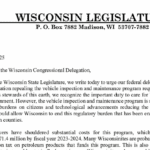By Brian Fraley for Dairyland Sentinel
Milwaukee has changed since 1982. Back then, beer was beer: Schlitz, Pabst, Old Style … and the American League powerhouse Brewers’ “Harvey’s Wallbangers” played a game that was all muscle and grit. Today’s Cream City is dotted with microbreweries, IPA tap lists, and experimental sours; and, the Brewers’ approach is just as modern…driven by metrics, platoon matchups, and roster churn that would give traditional managers like Harvey Kuenn heartburn. But just as the any good brewmaster will tell you, every batch has its own flavor. The 2025 team has brewed up a different kind of winner. It may not taste like 1982’s blend, but you don’t have to choke it down. This year’s offering just might be the best mug of baseball Milwaukee has poured yet.
According to a just-published ESPN Survey of MLB experts, the 2025 Milwaukee Brewers are one of only four big league clubs without one player ranked among MLB’s top 50. Had a survey been conducted in 1982, for example, clearly Robin Yount, Rollie Fingers and Pete Vuckovich would have made the list. Many voters would have included Paul Molitor and Cecil Cooper in their top 50 as well.
It is true that compared to most teams, including most rosters in Brewers’ franchise history, the 2025 roster is much more than a sum of it’s component ingredients.
Note: While we look through the lens of modern analytics, the commonality between the two clubs is that as a cohesive team of characters, both the ’82 and ’25 Brewers played for each other and the name on the front of their uniforms, more so than the names on their backs. Those are not clichés. The proof is in the boxscore after every game, and in the vibes of the clubhouse, now also as seen in interviews and on social media posts.
Here’s a comparison of the ’82 and ’25 teams that Brewer fans can read while in line for their free George Webb burgers.
Catcher
In 1982, Ted Simmons brought a switch-hitting bat and a veteran’s patience to the heart of the order. He could drive the ball to the gap, call a smart game, and handle a staff that prided itself on attacking hitters. Simmons caught 146 games that year — an almost unthinkable workload by today’s standards — and hit .269 with 23 home runs. The 2025 Brewers counter with William Contreras, a modern-day workhorse in his own right but with more emphasis on framing and game-calling analytics. Contreras’s power is comparable, even as he plays the season with a broken finger, and his on-base percentage hovers higher, and his bat-to-ball skills are better suited for the high-spin fastballs of today’s game. While Simmons was part of a core that played together for years, Contreras operates in a constant shuffle of battery mates, a reflection of the times.
First Base
Cecil Cooper in 1982 was the definition of professional hitter: .313 average, 32 homers, 121 RBI, and hands so quick he could spoil any pitcher’s best pitch. He played first base with soft hands and smooth footwork, turning tough throws into easy outs. In 2025, Rhys Hoskins has battled injuries. Thanks to Aaron Civale’s mid-season trade demand, Andrew Vaughn — acquired from the White Sox in the trade — has brought steadiness to the position. Vaughn doesn’t match Cooper’s batting average, but his power numbers and walk rate hold up well, and Statcast loves his hard-hit percentage. Cooper was a middle-of-the-order presence all year; Vaughn is still meshing with the lineup but already lengthens it in ways reminiscent of Coop’s role.
Second Base
Jim Gantner’s 1982 was all about reliability. He hit .295 (an All-Star stat by today’s metrics), played flawless situational baseball, and handled the double play with Robin Yount like clockwork. Brice Turang, the 2025 second baseman, brings more speed and defensive range, stealing bases that Gantner wouldn’t have attempted. At the plate, Turang’s contact profile is lighter, but his on-base skills have improved, and his sprint speed pressures defenses in a way Gantner’s line-drive game didn’t. Gantner thrived in the hit-and-run era; Turang thrives in the run-prevention era.
Shortstop
In 1982, Robin Yount was the MVP — a .331 hitter with gap-to-gap power, 29 homers, 46 doubles, and a jaw-dropping defensive highlight reel. His instincts and arm strength made him one of the most complete shortstops of his generation, and the greatest Milwaukee Brewer of all time. In 2025, the position belongs to Joey Ortiz, who has delivered plus defense and, since June, a surprising pop in his first full season as a regular at short. Ortiz doesn’t match Yount’s Hall of Fame résumé, but his contact skills and gap power fit neatly into Milwaukee’s depth-first offensive plan. Advanced metrics love Ortiz’s range and arm, making him one of the quiet anchors of the 2025 infield. This team is built on solid hit-stealing defense up the middle.
Third Base
Paul Molitor in 1982 was an engine at the top of the lineup, slashing .302 with 41 steals and elite bat control. He played third base with quick reactions and soft hands. The 2025 Brewers have used a platoon mix here: Caleb Durbin seeing most starts against lefties, and Andruw Monasterio and others getting reps versus righties. Neither brings Molitor’s offensive spark, but the combination has provided league-average production with defensive steadiness. Molitor rarely sat; in 2025, the platoon keeps both players fresh and maximizes matchups. Durbin has been clutch with runners on base, and may be one of the unsung heroes of this year’s team.

Outfield
The 1982 outfield was pure character and clout: Ben Oglivie in left with his looping power swing, Gorman Thomas patrolling center with a home run bat and all-or-nothing approach, and Charlie Moore (plus Mark Brouhard in spots) in right field, with Marshall Edwards sometimes spelling Thomas defensively. In 2025, right field has been anchored by Sal Frelick’s contact hitting and sharp defensive reads. Center field belongs to Jackson Chourio when healthy, but with him on the IL, Blake Perkins has stepped into near-everyday duty — his switch-hitting bat, speed, and outfield range making him one of the club’s most valuable all-around contributors now that he’s healthy. As the season progressed, left field has been manned primarily by Isaac Collins, who is emerging as a contender for NL Rookie of the Year. The 2025 mix was more matchup-driven in the start of the year and especially more so than in ’82, but the combination of tools and athleticism is just as potent. Using Christian Yelich primarily as DH has lightened his workload and likely lengthened his career.
Key Reserves
The 1982 bench had Mark Brouhard, Ed Romero, and Roy Howell — specialists in pinch-hitting and defensive substitution. The 2025 bench changes shape almost weekly, with Anthony Seigler providing late season lefty infield depth, Monasterio slotting in when not starting, and , as mentioned, DH Christian Yelich possibly available when Perkins or Frelick get a breather. Players have dipped in and out of Nashville all season. No team manages their 40-man roster better than Milwaukee. The churn is much higher than in 1982, but that constant movement keeps the roster adaptable, and eager.
Starting Rotation
In 1982, Don Sutton was traded to the Milwaukee Brewers by the Houston Astros on August 30. He joined Pete Vuckovich, Mike Caldwell, Moose Haas, and Bob McClure (a converted reliever). Randy Lerch and Jim Slaton also saw time in the rotation. In 2025, it’s been a revolving keg tap. 14 pitchers have started at least one game: Freddy Peralta, Quinn Priester, José Quintana, Chad Patrick, Brandon Woodruff, Jacob Misiorowski, Tobias Myers, Logan Henderson, DL Hall, Rob Zastryzny, Aaron Civale, Elvin Rodríguez (the home opener starter), Nestor Cortes, and Tyler Alexander. Four of those — Civale, Rodríguez, Cortes, and Alexander — are no longer on the roster. Injuries, trades, and opener usage have defined the year. Peralta leads the group in starts; Quintana and Priester have been steady; Misiorowski brings high-octane heat; and Woodruff’s stellar return bolstered this playoff push.
Bullpen
The ’82 bullpen leaned on Rollie Fingers (when healthy) and Pete Ladd, with Jim Slaton filling long relief. In 2025, the bullpen has been a blend of power arms and matchup lefties. Trevor Megill has taken the closer role, Abner Uribe has flashed triple-digit velocity in high-leverage spots, and Jared Koenig has excelled as the reliable lefty out the pen. DL Hall transitioned here after early starts and has thrived in a multi-inning role. Myers has also swung into relief duties after an IL stint and earlier spot starts, showing the hybrid flexibility managers demand today.
Coaching & Front Office
Harvey Kuenn in ’82 was a players’ manager, beloved for his steady hand after taking over midseason. General Manager Harry Dalton built that club largely through trades and farm development. In 2025, Pat Murphy brings a mix of old-school clubhouse connection and openness to data. GM Matt Arnold operates in a transaction-heavy environment, working the waiver wire, minor trades, and international signings. The pace and volume of moves in 2025 would have seemed chaotic in 1982 — but in the modern game, it’s the norm.
From County Stadium’s brats-and-beer afternoons to American Family Field’s craft beer concourse, the Brewers’ story is still poured from the same tap of hope and hustle. The 1982 squad was a hearty glass of Miller High Life. Tasty, bold, foamy, and unforgettable. Meanwhile the 2025 team feels more like a crisp local seasonal, something brewed with precision and a rotating list of ingredients.
Both have earned their place in Milwaukee’s baseball heritage. One was a lineup you could set your watch to; the other is a living, changing roster that, after a tough first six weeks, consistently delivers whenever the taps are open.
Whether this year’s brew will age into Blue Ribbon material or even surpass ’82’s success depends on the weeks ahead, of course, but the flavor is there.
And for Brewers fans, that’s reason enough to keep raising a glass for every amazing play.
Fraley has been a Brewers fan since 1970.












